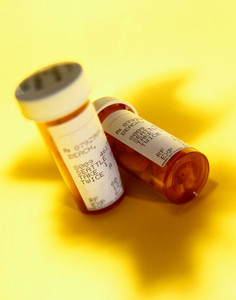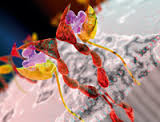Johnson & Johnson reported on 13 October 2009 that third-quarter revenue from pharmaceuticals fell 14.1% to US$5.3 billion (Euros 3.59 billion) compared to the prior-year period, due to generic competition and the negative impact of currency exchange. Net income for the three-month period increased 1.1% to US$3.3 billion (Euros 2.23 billion), due in part to reduced costs from job reductions and the consolidation of the company's management structure.
Johnson & Johnson ‘buys’ to fight generic competition
Home/Pharma News
|
Posted 10/11/2009
 0
Post your comment
0
Post your comment

In the pharmaceuticals unit, revenue for Remicade rose 5.9% to US$1 billion (Euros 676.54 million), compared to the year-ago period in 2008, while sales of Risperdal Consta were up 4.4% to US$353 million (Euros 238.82 million). Combined sales for Procrit/Eprex dropped 12.4% to US$542 (Euros 366.62 million) million, and generic competition negatively affected revenue for Risperdal and Topamax, which fell 40% and 76%, respectively, to US$192 million (Euros 129.88 million) and US$175 (Euros 118.37 million), compared with the same period in 2008. Overall sales for the company for the three months ending 30 September 2009 were down 5.3% to US$15.1 billion (Euros 10.2 billion), in line with analysts’ estimates of around US$15.2 billion (Euros 10.3 billion).
WBB Securities Analyst, Mr Steve Brozak, called the results a shocker, explaining that Johnson & Johnson pretty much [has] made it clear now that they've got to buy their future. They've got to buy products and buy them at an earlier stage than they ever have before. Analyst Erik Gordon of the University of Michigan's Ross School of Business added that he believes Johnson & Johnson has been hit the worst by generic competition in the industry.
For the full year, Johnson & Johnson raised its earnings guidance to US$4.54 to US$4.59 per share, from a previous range of US$4.45 to US$4.55. CEO William Weldon remarked that the company expects future growth to be driven by recent acquisitions and strategic partnerships, such as a stake in Crucell and in Elan, as well as new product approvals.
Johnson & Johnson purchased an 18% stake in Crucell for Euros 301.8 million (US$442 million) as part of the collaboration focused on the treatment and prevention of influenza, as well as other diseases, the companies announced on 28 September 2009. The deal, which saw Johnson & Johnson buy 14.6 million shares in Crucell at a 30% premium to their average price over the past 35 days, also includes potential milestones and royalty payments linked to the successful development of products.
The companies noted that the agreement would initially focus on the development of a universal monoclonal antibody (flu-mAb) for treating and preventing infections with all influenza A strains, including H1N1 and H5N1. SNS Securities Analyst, Ms Ilja Zaanen said that with regards to the antibody, although the drug is still in a very early stage, Crucell would not have been able to support the expensive late clinical trials on its own. Royal Bank of Scotland Analyst, Mr Mutlu Gundogan, said that Crucell might no longer be a potential takeover target in the short term.
In the longer term, Johnson & Johnson and Crucell will work on new discovery programmes for a universal influenza vaccine, as well as monoclonal antibodies and vaccines targeting up to three other infectious and non-infectious diseases. Johnson & Johnson will hold commercialisation rights for products resulting from the collaboration in all countries except the EU and certain additional European countries.
References:
Johnson & Johnson records 14.1-% drop in 3Q pharmaceutical sales. FirstWord. 2009 Oct 13.
Johnson & Johnson buys 18-% stake in Crucell, companies form collaboration. FirstWord. 2009 Sep 28.
Source: FirstWord
Guidelines
New guidance for biologicals in Pakistan and Hong Kong’s independent drug regulatory authority
Canada poised to remove requirement for Phase III trials for biosimilars
Policies & Legislation
Argentina streamlines drug approval process
ANVISA tackles 24-month backlog in biologicals post-registration petitions
Most viewed articles
The best selling biotechnology drugs of 2008: the next biosimilars targets
Global biosimilars guideline development – EGA’s perspective
Related content
Formycon signs new aflibercept biosimilar pacts and launches ranivisio in Europe
Bio-Thera and Stada expand biosimilars alliance to include tocilizumab
Global partnerships for biosimilar commercialization announced
New denosumab and ustekinumab biosimilar launches in US, Canada and Japan
Formycon signs new aflibercept biosimilar pacts and launches ranivisio in Europe

Home/Pharma News Posted 13/11/2025
Bio-Thera and Stada expand biosimilars alliance to include tocilizumab

Home/Pharma News Posted 20/10/2025
New denosumab and ustekinumab biosimilar launches in US, Canada and Japan

Home/Pharma News Posted 10/07/2025
The best selling biotechnology drugs of 2008: the next biosimilars targets







Post your comment